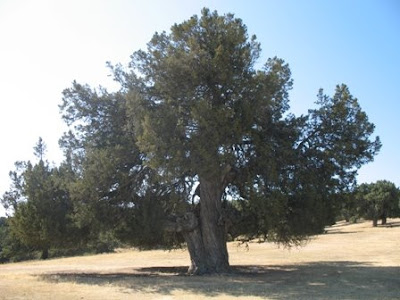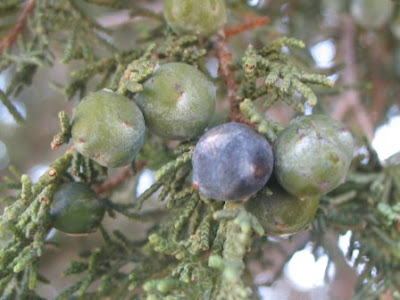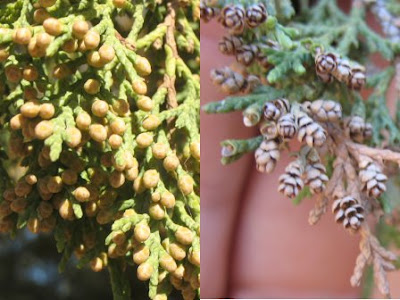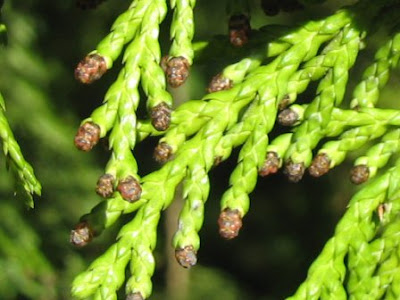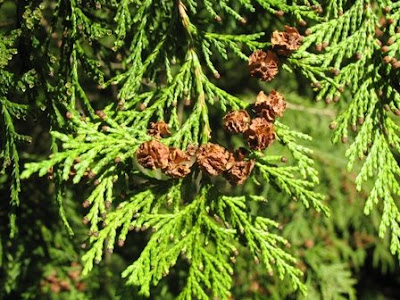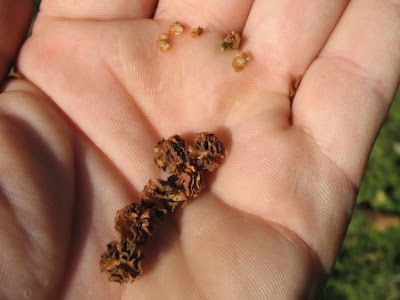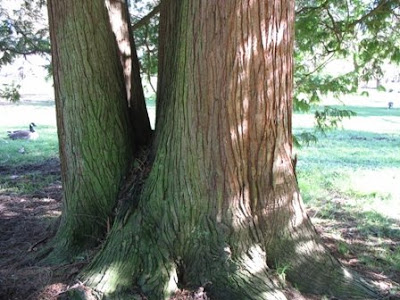
The Common European Beech tree (species -
Fagus sylvatica) is native to central Europe growing from Sweden south to Spain and from England east to Turkey. The images in this post are of the "
Purpurea" variety (purple colored leaves) of a tree in the "
Fuente del Berro" park of Madrid.

These trees are not found as far south as the city of Madrid growing wild. About an hours drive north of Madrid can be found an ancient Beech forest that is one of the farthest south in Europe. It is called the "
Hayedo de Montejo". Beech in Spanish is "
Haya" and a Beech forest is a "
Hayedo". I have had the privilege of visiting this ancient grove of Beech trees and it is indeed an enchanting and beautiful place full of the kind of trees that you would expect to find in a
fairy tale. I hope to visit the
Hayedo de Montejo later this fall to get some good images of its Beech trees.

The visit to the
Hayedo de Montejo has to be reserved in advance and is conducted in the company of a guide who leads you through the ancient grove and explains the history of the Beech forest. One
distinct memory that I have of the visit was not being
allowed to step off the path for fear of stepping on one of the Beech saplings. The guide explained that the
saplings grow very slowly for the first few years and that even at five years of age
might only be 6-12 inches tall and hard to see while walking.

Given that the
Hayedo of
Montejo is in danger of
disappearing great care is taken to preserve the young
saplings.

I picked a mature "fruit" (seed pod) off the tree and took it home so I could study it some more.

The next morning I was surprised to see that it had opened up (below) exposing two curvy, three edged seeds that were about 3/8 inch long (1 cm).
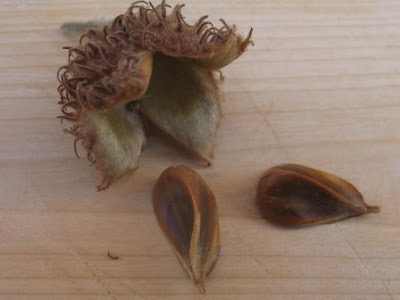
The trunk base of this tree flares out quite a bit.

 Bonsai Garden Secrets"Bonsai Gardening Secrets" is an easy to understand quick-start guide that'll show you how to create stunningly beautiful Bonsai trees
Bonsai Garden Secrets"Bonsai Gardening Secrets" is an easy to understand quick-start guide that'll show you how to create stunningly beautiful Bonsai trees
 The European Black Pine tree (Pinus Nigra) is called "Pino Negro" in its native Spain (its native range is actually quite broad and extends from North Africa all across Southern Europe and into Asia. It has relatively small cones as far as pines go. The cones in these pictures were about 6-7 cm long (2 inches). I found the black stripe down the middle of the scales (above) very interesting. These newly opened cones had an almost perfect shape. As they dry and turn more of a grey-brown color this stripe seems to fade.
The European Black Pine tree (Pinus Nigra) is called "Pino Negro" in its native Spain (its native range is actually quite broad and extends from North Africa all across Southern Europe and into Asia. It has relatively small cones as far as pines go. The cones in these pictures were about 6-7 cm long (2 inches). I found the black stripe down the middle of the scales (above) very interesting. These newly opened cones had an almost perfect shape. As they dry and turn more of a grey-brown color this stripe seems to fade. The image below is of the polen cones.
The image below is of the polen cones. One of the stand of this tree species that I found was of trees that were quite straight and tall (25 meters, 75 feet). In the vicinity of this tree stand there were numerous Atlas Cedars.
One of the stand of this tree species that I found was of trees that were quite straight and tall (25 meters, 75 feet). In the vicinity of this tree stand there were numerous Atlas Cedars. The image below is a detailed drawing of the European Black Pine´s various parts.
The image below is a detailed drawing of the European Black Pine´s various parts.










